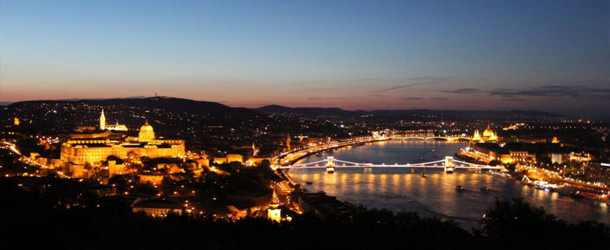There are certainly no prizes for guessing which river you have to cruise along if you want to experience the highlights of this captivating city. ‘The Pearl of the Danube’ as Budapest is sometimes known, is synonymous with the famous river and its many springs are served by millions of gallons of the Danube’s water daily. The river’s also responsible for making the city the vibrant and contrasting tourist draw what it is, as it passes directly through its centre, creating two distinct areas; ‘Buda’ and ‘Pest’. With the Ottoman and Roman Empires having both marched through the city’s history, there’s a wealth of beautiful architecture and sites of historic interest to discover, though if medieval history is your bag, then you’ll possibly be spending most of your time in Buda’s ever-popular Castle Hill area.
Hungary’s capital and largest city, Budapest traces its origins back to Celtic times and the ancient city of Aquincum, the ruins of which can still be found in Budapest today. Throughout history, it’s been the capital of a Roman Province, attacked by Mongol hordes, ruled by the Ottoman Empire and the site of the Hungarian Revolution but nevertheless emerged as one of Europe’s most politically influential, prosperous and beautiful cities. However, it only officially became a single city in 1873, following the unification of east-bank Pest and west bank Buda and Obuda. With all that history, it’s not surprising that a large area of Budapest today is designated a UNESCO World Heritage Site, though it’s a contemporary player on the European stage too, ranked third on Mastercard’s Emerging Markets Index, and the seventh most idyllic place to live in Europe by leading US business magazine Forbes.
What not to miss
There’s so much to experience in Budapest, but if you find yourself with just a day to explore, here’s a look at five must-sees in the Captial of Freedom.
Castle Hill
Painstakingly restored after the destruction it suffered during World War II, the Castle Area can be found in medieval ‘Buda’ and is home to a number of Budapest’s most popular tourist sites. It would be easy to spend a full day wandering its charming cobble streets and alleyways, but if you’ve less time to spare be sure you visit Matthias Church – a truly stunning piece of architecture where, throughout history, Hungary’s kings were crowned. Nearby is the Fisherman’s Bastion, a medieval folly actually built in the 19th Century which is all towers, turrets and ramparts, which offers great views of the city. Of course, you couldn’t visit Castle Hill without seeing the castle and Buda’s 13th century Royal Palace is certainly worth the trip.
Parliament
You may notice something vaguely familiar about this neo-gothic masterpiece, that’s because it was inspired by none other than London’s Houses of Parliament. The beautiful exterior of what is the third largest parliament building in the world is worth the visit alone, but if you have a little more time to devote to the building, be sure to take the guided tour. It’s worth noting that when parliament is in session, the tour is shorter but costs the same. This may work in your favour if time is an issue though.

Hungarian State Opera House
Constructed in the new-Renaissance style and modelled after the iconic Vienna Opera House, this iconic building has become arguably as popular and is home to both the State Opera and State Ballet. Designed by celebrated Hungarian architect Miklos Ybl, it’s considered one of his finest works and the beautifully decorated exterior features statues of the country’s most famous composers Franz Liszt and Ferenc Erkel. Inside, there’s all manner of murals and the main hall features a chandelier worthy of The Phantom of the Opera himself, weighing in as it does at 3050kg. Of course, to fully appreciate the building and the purpose for which it was built you should take in a ballet or opera, or at least, a guided tour.
Heroes’ Square
Located at the end of Andrassy Avenue and part of the city’s extensive World Heritage site, this historic square and its iconic statues are one of Budapest’s most striking locations. The square was built in 1896 to mark the millennium of the Magyar Conquest of Hungary and the towering Millennium Monument is its centrepiece, which features statues of the country’s most prominent historic figures. You’ll also find the Museum of Fine Arts and the Palace of Art at the edge of the square.
The Chain Bridge
One of Budapest’s more modern attractions (though it’s still well over 150 years old), the Chain Bridge is now one of the city’s most famous attractions, and was the first to be built over Hungary’s section of the Danube. Designed by the English engineer William Tierney Clark, the suspension bridge was one of the largest in the world at the time of its construction and offers some fantastic views of both sides of the city and is also of course, a convenient way to travel from one side to the other.

Danube cruises through Budapest are offered by all the major river cruise lines including Viking River Cruises
By Simon Brotherton
Google



